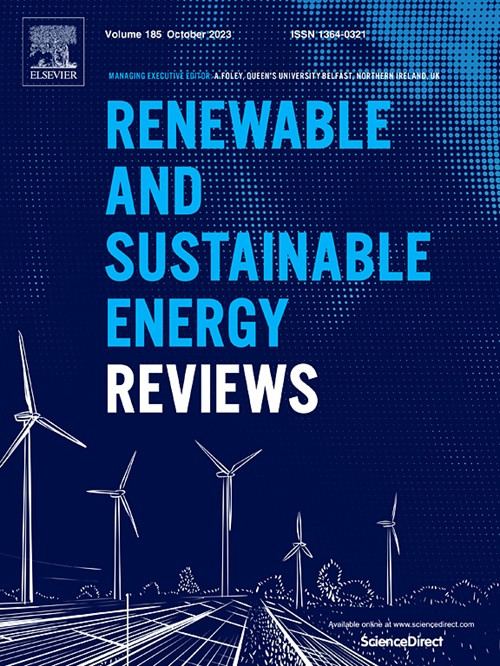求解声学团聚一般动力学方程的数值算法综述
IF 16.3
1区 工程技术
Q1 ENERGY & FUELS
引用次数: 0
摘要
由于先进制造业的快速发展,加工过程中产生的颗粒污染物对人类健康、设备安全、大气质量和气候构成重大风险。目前的工业控制技术很难有效地去除这些颗粒。声波团聚技术是一种有效的颗粒预处理技术,利用声波促进颗粒的生长和随后的去除。粒子动力学模拟擅长于描述粒子的声学聚集。它利用数值算法来解决一般动力学方程(GDE),它量化了粒子动力学的演变。由于其典型的偏积分-微分性质和复杂的聚集机制,使用传统的数值技术来求解GDE是具有挑战性的。因此,本研究以声集聚GDE为基础,对矩量法、划分法、蒙特卡罗(MC)算法和离散元法(DEM)等求解声集聚GDE的各种算法的特点和最新研究进展进行了全面综述。详细介绍了MC算法、DEM及其与DEM的耦合等方法。最后,讨论了算法应用的局限性和未来的机会。本文综述对粒子声团聚的可视化、微观机制的阐明以及对粒子声团聚的宏观影响的预测提供了有价值的见解。同时也为后续数值算法的优化、整合和创新提供了一个全面的视角。从而建立健康的产业环境,推进可持续发展目标的实现。本文章由计算机程序翻译,如有差异,请以英文原文为准。
Review on numerical algorithms for solving general dynamic equations of the acoustic agglomeration
Owing to the rapid growth of advanced manufacturing, particulate pollutants generated during machining processes pose significant risks to human health, equipment safety, atmosphere quality and climate. Current industrial control technologies struggle to effectively remove these particles. Acoustic agglomeration technology is an effective particle pretreatment that uses acoustic waves to facilitate the growth and subsequent removal of particles.
Particle dynamics simulation is adept at depicting particle acoustic agglomeration. It utilises numerical algorithms to address the general dynamic equation (GDE), which quantifies the evolution of particle dynamics. Using conventional numerical techniques to solve the GDE is challenging because of its typical partial integro-differential nature and the intricate agglomeration mechanisms it encompasses. Therefore, drawing on acoustic agglomeration GDE, the research provide a comprehensive review of the characteristics and recent research progress of various algorithms used to solve the GDE of acoustic agglomeration, including method of moments, partition method, the Monte Carlo (MC) algorithm and discrete element method (DEM). MC algorithm, DEM and the coupling of DEM and other method are reviewed in detail. Finally, limitations and future opportunities are discussed about algorithm's applications. This review offers valuable insights into visualising particle acoustic agglomeration, elucidating its microscopic mechanisms and predicting its macroscopic effects on particle agglomeration. Meanwhile, it provides a comprehensive perspective for the optimization, integration and innovation of subsequent numerical algorithms. Thereby, the healthy industrial environment is established, and the achievement of the Sustainable Development Goals is advanced.
求助全文
通过发布文献求助,成功后即可免费获取论文全文。
去求助
来源期刊

Renewable and Sustainable Energy Reviews
工程技术-能源与燃料
CiteScore
31.20
自引率
5.70%
发文量
1055
审稿时长
62 days
期刊介绍:
The mission of Renewable and Sustainable Energy Reviews is to disseminate the most compelling and pertinent critical insights in renewable and sustainable energy, fostering collaboration among the research community, private sector, and policy and decision makers. The journal aims to exchange challenges, solutions, innovative concepts, and technologies, contributing to sustainable development, the transition to a low-carbon future, and the attainment of emissions targets outlined by the United Nations Framework Convention on Climate Change.
Renewable and Sustainable Energy Reviews publishes a diverse range of content, including review papers, original research, case studies, and analyses of new technologies, all featuring a substantial review component such as critique, comparison, or analysis. Introducing a distinctive paper type, Expert Insights, the journal presents commissioned mini-reviews authored by field leaders, addressing topics of significant interest. Case studies undergo consideration only if they showcase the work's applicability to other regions or contribute valuable insights to the broader field of renewable and sustainable energy. Notably, a bibliographic or literature review lacking critical analysis is deemed unsuitable for publication.
 求助内容:
求助内容: 应助结果提醒方式:
应助结果提醒方式:


